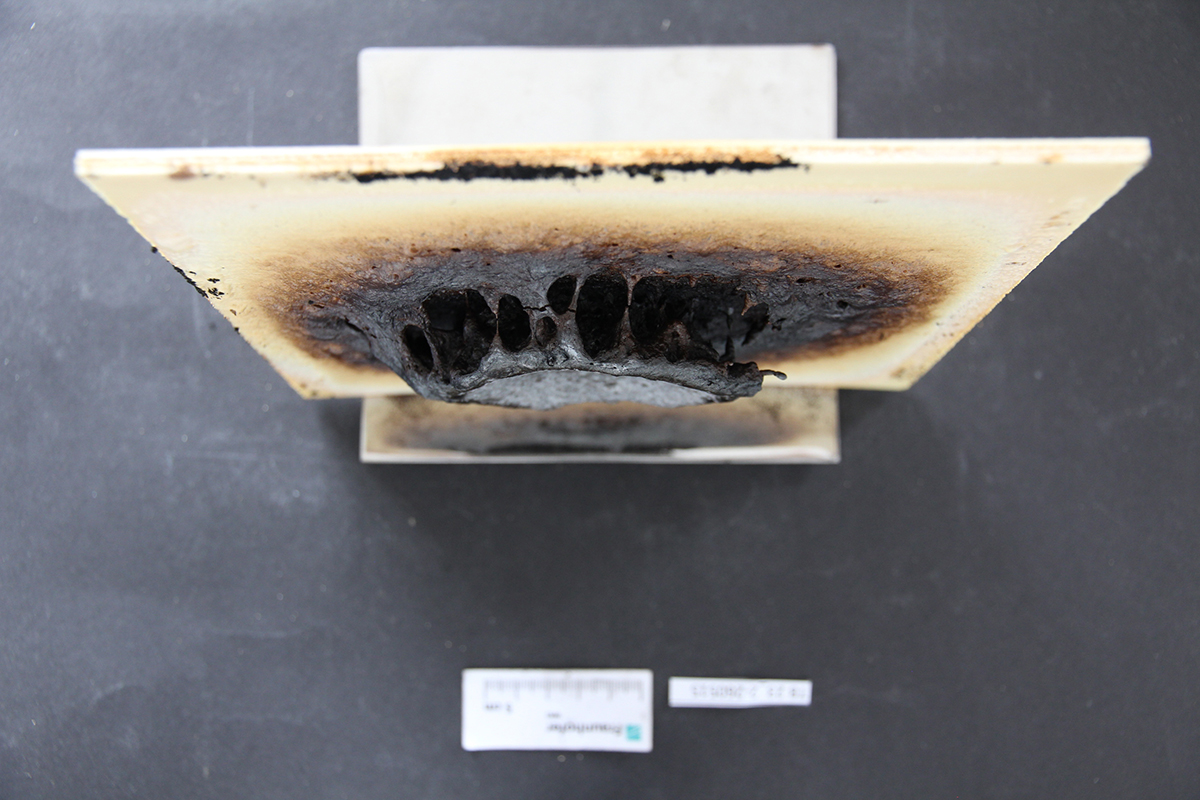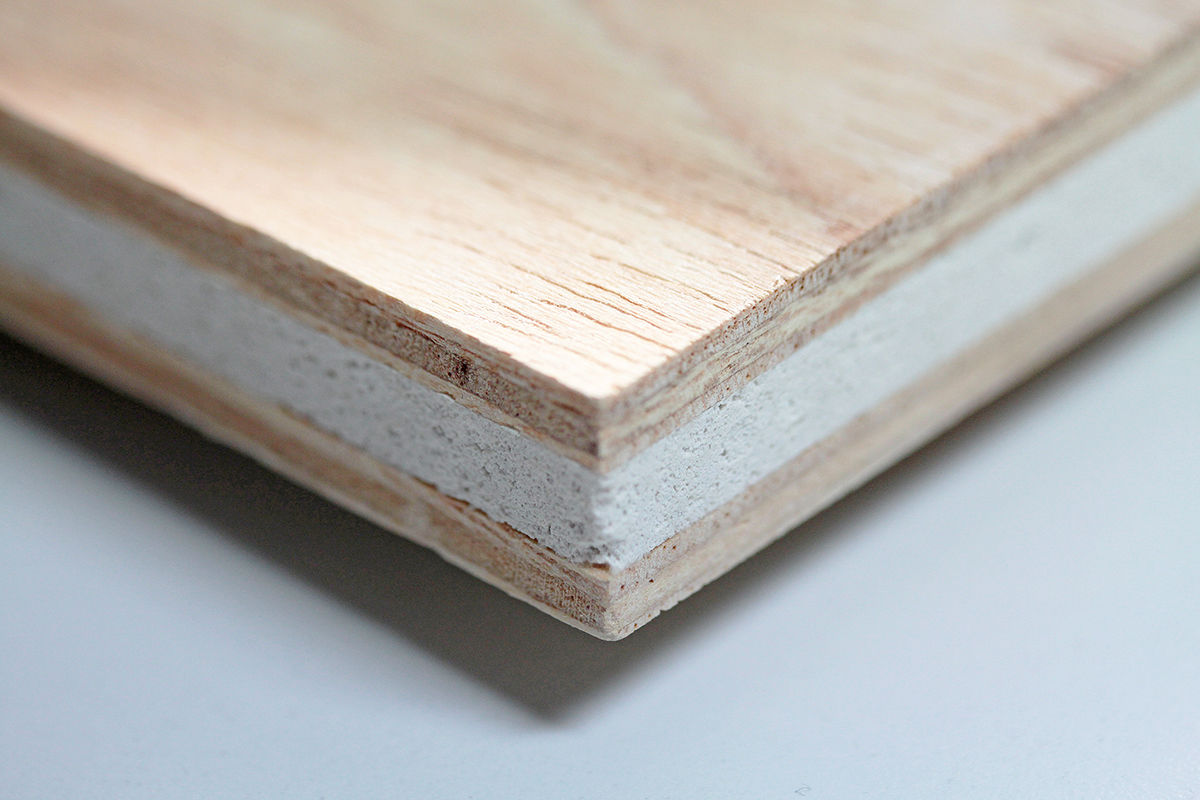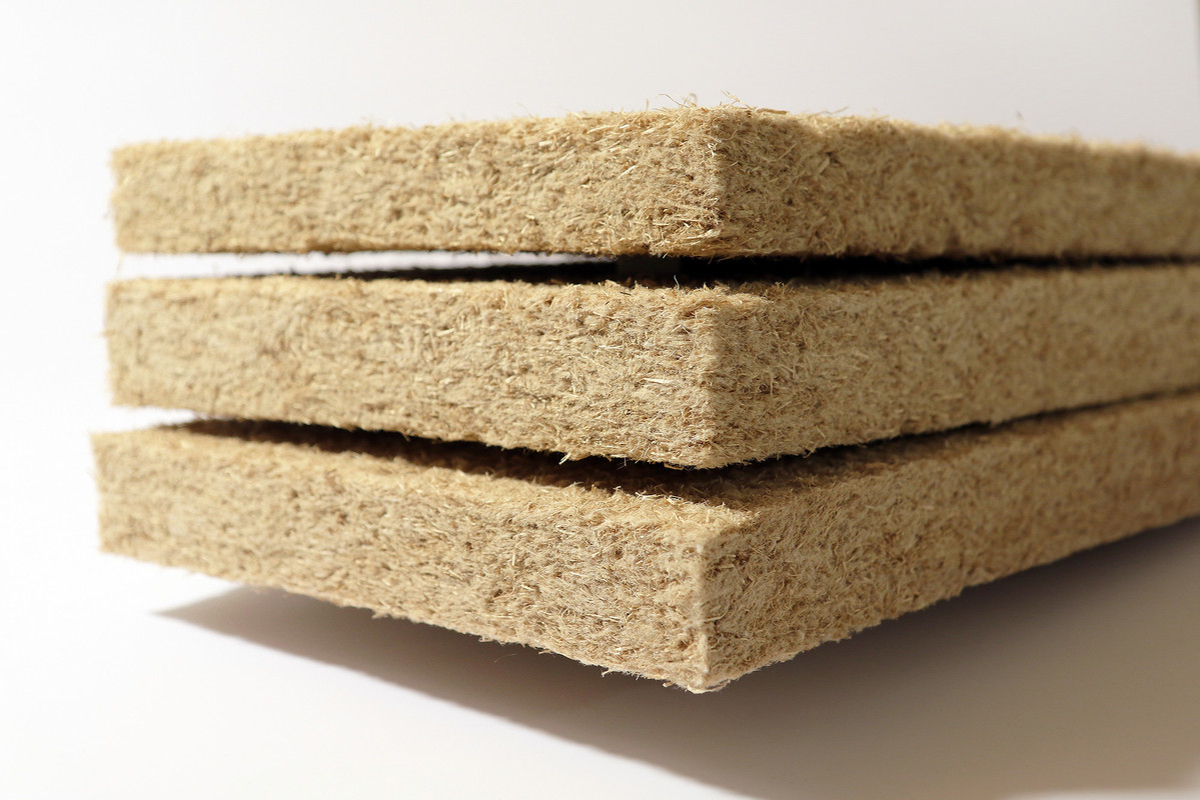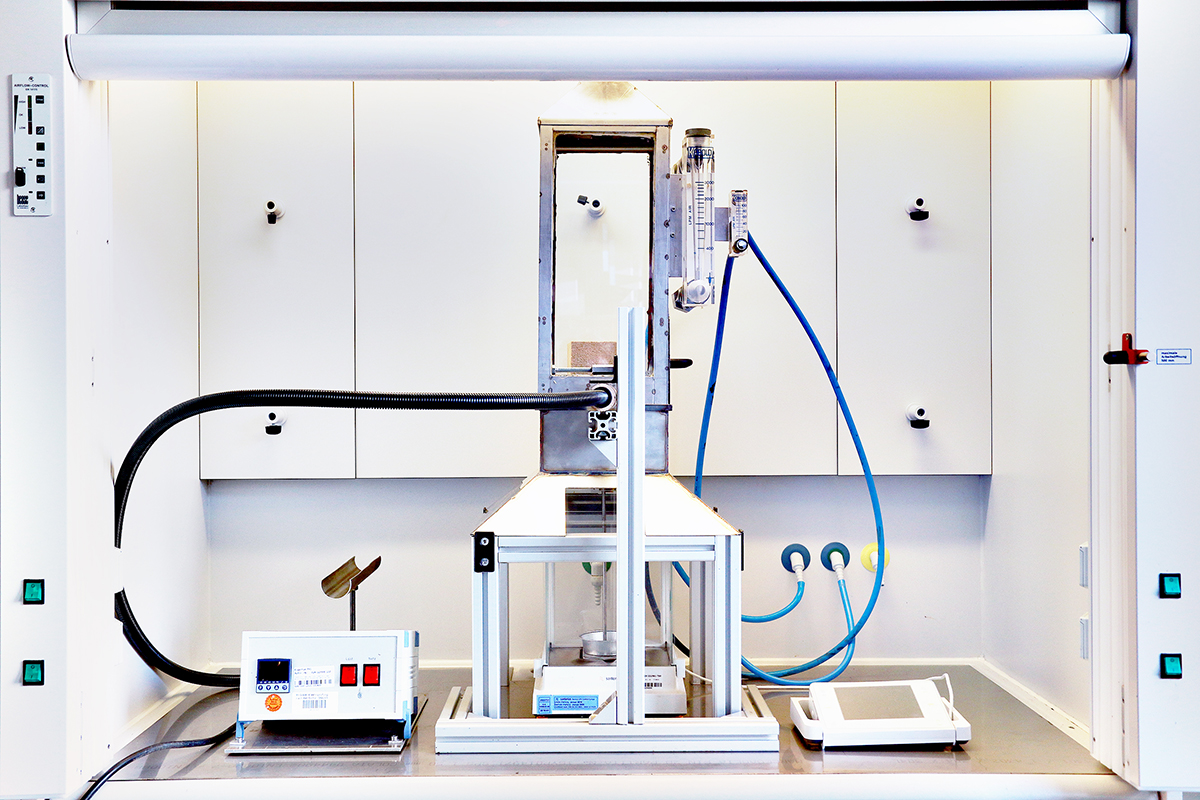The higher and larger a building is, the higher the requirements for the fire behavior of the utilized construction materials. In addition, special buildings such as schools, hospitals and hotels are usually subject to strict fire-protection regulations - even if they are small or low-rise. We develop industry-oriented fire-protection solutions for wood and wood-based materials as well as innovative biocomposite materials. This also includes the determination of material characteristic values for construction-material classification. In doing so, we are providing a contribution towards the increased utilization of renewable raw materials in the construction industry, particularly in multi-story buildings. We can also apply our expertise to the interior construction of vehicles.
Fire protection
Research topic
Construction materials must be characterized and classified in terms of their fire behavior in accordance with legal requirements. In buildings with a height of 7 meters or more (building classes 4 and 5), predominantly “flame-retardant” or “non-combustible” construction materials are required. Our aim is to ensure that materials, construction elements and structures which are made entirely or partially from renewable raw materials can achieve this construction-material classification.

Fire-protection coatings
The flammability of construction materials can be reduced with “intumescent” coatings, which form a protective insulating layer in the event of fire. If a specific limit temperature is exceeded, the coating foams (intumesces) and forms a voluminous carbon-containing layer that insulates the constructionmaterial. We develop transparent and colored fire-protection coatings which upgrade wood and wood-based materials to building-material class B1 (“flame-resistant”).

Non-combustible construction products made from renewable raw materials
If a construction product is inherently “non-combustible”, it does not need a fire-resistant coating. We conduct research into how construction products made from wood and other renewable raw materials can be made “non-combustible”, for example by means of special pre-treatments. Building on this fundamental research, we develop construction products for diverse applications - for example, plywood panels for the interior outfitting of ships or drywalls in buildings with a fire-resistance duration of 60 minutes.

Glow-protection agent for natural insulation materials
Insulation materials made from wood and other renewable raw materials exhibit favorable properties in the event of fire. They burn relatively slowly, do not melt and do not cause dense black smoke. However, they have a propensity to smolder and/or glow continuously. In order to ensure that they can nevertheless be used in taller buildings, we develop suitable glow-protection agents. Glow-protected natural insulation materials could also be installed in special buildings with increased fire-protection requirements, such as schools, hospitals and hotels. Furthermore, we are also conducting fundamental research in order to obtain a better understanding of the glow process.
Fire-protection characterization of materials
In order to ensure that the new materials, coatings and glow-protection agents can be implemented, we characterize and test them according to standardized norms. This includes the execution of small- to medium-scale fire tests as well as thermal analyses and the investigation of the resulting gases by means of FTIR spectroscopy and mass spectrometry. Furthermore, we also develop evaluation methods, identify material characteristics, and design the test procedures. One example is the test facility which we have developed for analyzing the glow behavior of natural insulation materials.
 Fraunhofer Institute for Wood Research
Fraunhofer Institute for Wood Research 